We warmly welcome Graham Hancock as our featured author for May with his book VISIONARY: THE MYSTERIOUS ORIGINS OF HUMAN CONSCIOUSNESS — a newly released update of his 2005 book Supernatural: Meetings with the Ancient Teachers of Mankind. To give a flavour of the book’s wide-ranging subject matter, we offer here Chapter Fourteen — THE SECRET COMMONWEALTH — as a free-to-read extract.
In Visionary, Graham investigates a mysterious “before-and-after moment” in the human story where dramatic and electrifying changes in the creative and cognitive capabilities of our ancestors took place. Described by scientists as “the greatest riddle in human history”, this was the moment when all the skills and qualities that we value most highly in ourselves appeared already fully formed, as though bestowed on us by hidden powers.
To discover the truth about the influences that gave birth to the modern human mind, Graham embarks on a journey of adventure and detection that takes him from the stunningly beautiful painted caves of prehistoric France, Spain, Italy and South Africa to the depths of the Amazon rainforest to drink the powerful plant hallucinogen ayahuasca with indigenous shamans.
Could the “supernaturals” first depicted in the painted caves and rock shelters be the ancient teachers of mankind? Could it be that human evolution is not just the “blind,” “meaningless” process that Darwin identified, but something more purposive and intelligent, something that we have barely even begun to understand?
Interact with Graham on our AoM Forum here.
The great Swiss psychologist and psychiatrist Carl Gustav Jung, writing in 1958, was the first to point out that the UFO phenomenon has a history, and perhaps a prehistory. Large numbers of people would later report having experienced abductions during the 1950s and even the 1940s, but in 1958 the matter had not yet received any publicity, and Jung knew nothing of it. His interest was therefore limited exclusively to UFOs themselves which, since the Second World War, had generated huge numbers of eyewitness reports of “flying saucers” and ever-rising public interest and concern. Jung described the sightings as a new form of global rumor that “differs from an ordinary rumor in that it is expressed in the form of visions.”1 His inclination was to treat UFOs as “a 99 percent psychic product,” yet he admitted he was baffled by their “apparently physical nature,”2 which, he lamented, created “insoluble puzzles for even the best brains”:3
The only thing we can say with tolerable certainty about UFOs is that they possess a surface which can be seen by the eye and at the same time throws back a radar echo.4
In addition one other thing was clear, and this was that UFOs were nothing new:
Though UFOs were first publicized only towards the end of the Second World War, the phenomenon itself was known long before. It was observed in the first half of this century [the twentieth century], and was described in earlier centuries and perhaps even in antiquity.5
In August 1566, for example, “many large black globes were seen in the air” above the city of Basel in Switzerland, “moving before the sun with great speed, and turning against each other as if fighting. Some of them became red and fiery and afterwards faded and went out.”6 Jung reproduced an illustration of the scene from a Basel broadsheet of 1566, noting that the “speed and irregular motion” attributed by eyewitnesses to the black discs “are typical UFO features.”7
In April 1561, there was a spectacular UFO display over Nuremberg, Germany. Plates and globes were sighted in large numbers whirling in the sky near the sun, and also “great tubes in which three, four and more globes were seen.”8
An engraving from the seventeenth century shows a pilgrim breaking through the star-strewn rim of this universe and beholding what Jung describes as
another, supernatural universe filled with . . . layers of cloud or mountain ranges. In it appear the wheels of Ezekiel and rings or rainbow-like figures, obviously representing the “heavenly spheres.” In these symbols we have a prototype of the UFO empirical vision . . .9
A fourth scene considered by Jung, called “The Quickening of the Child in the Womb,” is from the Rupertsberg Codex (twelfth century, written by Hildegard of Bingen), and shows a pregnant woman, reclining, approached by two groups of people bearing baskets of gifts.10 I note in passing that a mushroom, in the hands of a small goblin-like figure, can be seen in one of the baskets.11
Meanwhile a large quadrangular object containing a curious mixture of eyes and discs floats overhead, set against the background of a starry sky. The object is connected by a long tube to a fetus in the woman’s womb.12
Although he knew nothing of the UFO abduction phenomenon, Jung was characteristically prescient in picking out this scene from the twelfth-century codex. Not only was something very much like the basic form of the flying quadrangular object sketched by eyewitnesses of a modern UFO sighting (the Cash/Landrum case), but also the scene neatly symbolizes one of the fundamental themes of UFO abductions—namely the impregnation of human women by aliens and the creation of hybrid offspring. In addition, it may or may not be relevant that following some sightings of UFO-type lights in the sky in the US in the late 1960s, people reported experiencing strange dreams in which groups of giant eyes floated above them.13
Jacques Vallee and the Flying Saucer Connection
Jung’s insights were penetrating, but as he himself admitted, his research—for what was never intended to be more than a short monograph—was strictly limited. Beyond recognizing that a historical background to the UFO phenomenon does exist (and examples could be multiplied from every folklore and mythology of the world), he had neither the time nor the inclination to find out more before his death in 1961.
A few years later, in 1969, the mystery of the historical background to the UFO sightings of the mid-twentieth century was explored again. This time the task was taken up with great vigor by mathematician and NASA consultant Jacques Vallee in his underground cult classic Passport to Magonia.14
Vallee’s contributions were manifold. Of great value is his catalogue of UFO sightings documented in relatively recent news sources. The catalogue, which stretches back long before the first modern wave of publicity for the phenomenon following World War II, begins in July 1868, when a strange “aerial construction” bearing lights and making engine noises flew low over the Chilean town of Copiago.15
In January 1878, a farmer in Texas was startled by a sighting of a dark flying object that he described as a “large saucer.”16 In 1880, a 14-year-old boy saw a luminous ball descend from the sky and hover near him. He reported feeling drawn to it but overcame his fear and escaped.17 The examples go on and on; without needing to reproduce Vallee’s entire catalogue here, the gist is that many apparently motorized and piloted UFOs, and even identifiable “flying saucers,” were in fact seen all over the world during the second half of the nineteenth century.18
Moreover, Vallee was able to trace the phenomenon much further back than this, and much further even than Jung had followed it. Indeed, Vallee’s title, Passport to Magonia, is taken from an account written by Agobard, Archbishop of the French city of Lyons, around the year 820. Like a modern UFO skeptic, the good archbishop’s testament to posterity was a lament at the ignorance of the masses for believing in the existence
of a certain region, which they call Magonia, whence ships sail in the clouds . . . Out of the number of those whose blind folly was deep enough to allow them to believe these things possible, I saw several exhibiting in a certain concourse of people, four persons in bonds— three men and a woman who they said had fallen from these same ships; after keeping them for some days in captivity they had brought them before the assembled multitude, as we have said, in our presence to be stoned. But truth prevailed.19
Doesn’t it seem likely that these four unfortunates, who Agobard saved, would describe themselves as UFO abductees if their experience were to occur today? It may be relevant that a small number of modern abductees have stated that they were not conveniently floated directly back to their homes and beds after the experience, but dropped less gently elsewhere—sometimes miles away. It is not difficult to imagine how such a return, observed or merely reported, might have attracted the attentions of a lynch mob in the superstitious climate of the ninth century.
Another early UFO report that Vallee found comes from Japan, where Imperial records inform us of the erratic flight over Kii Province, beyond the north-east mountain of Fukuhara, of an unusual brightly lit object described as an “earthenware vessel.” Soon “the object changed its course and was lost to sight at the southern horizon leaving a luminous trail.”20 Likewise, on September 12, 1271, the famous priest Nichiren was about to be beheaded at Tatsunokuchi, Kamakura, when there appeared in the sky “an object like the full moon, shiny and bright . . .” Officials panicked and cancelled the execution.21 Vallee also cites a number of other UFOs and UFO-linked phenomena that were seen and documented in Japan between the tenth and eighteenth centuries. In August 989, for example, three round, exceptionally bright objects that later joined together were observed. In September 1702, cottonlike threads fell from the heavens, apparently emanating from the sun itself, and in 1749 three more large round objects, “like the moon,” were observed continuously in the sky over a period of four days, sparking riots.22
In addition to such neglected and overlooked UFO reports in secular sources, Vallee argues that “it is in the literature of religion that flying objects from celestial countries are most commonly encountered . . .”23 Again, it is not necessary here to recapitulate in any detail the evidence already published on this point, but we can easily grasp what Vallee is getting at by calling to mind the winged discs of Sumer and ancient Egypt, the Vimana “aircraft” referenced in Hindu texts, the flying carpets of Arabia, and the “sky-rafts” used by the “star spirits” of ancient China.24 Let’s also not forget biblical UFO spectacles such as Elijah’s ascent to heaven in “a whirlwind” associated with a “chariot of fire”25 and the prophet Ezekiel’s vision, again involving a whirlwind and fire, as well as mysterious creatures onboard great “wheels” (cited earlier by Jung) that “lifted them up from the earth.”26 In the same general vein, we quite often read accounts in the Old Testament of such aerial vehicles as “the Chariots of God,”27 and descriptions of what sound like a superior race of beings whom humans must have dealings with and “who come from a far country, from the end of heaven.”28 Last but not least, in keeping with two of the fundamental themes of modern UFO abductions—sex with aliens and the creation of hybrid offspring— it is surely significant that the Bible depicts women having intercourse, and making monstrous hybrid babies, with heavenly supernaturals. In a famous passage from Chapter Six of the Book of Genesis, we read that the “Sons of God,” immortal beings whom scholars usually identify with angels,
saw the daughters of men that they were fair; and they took them wives, all of which they chose . . . There were giants in the earth in those days; and also after that, when the sons of God came unto the daughters of men and they bare children to them.29
Whatever else might be made of these strange verses, it is clear that the “sons of God” are not human—a matter on which every authority is agreed. Yet these non-human or superhuman spiritual powers seduce and impregnate mortal women, who in turn give birth to hybrid children. As the reader will agree, this is precisely the scenario explored in Chapter Thirteen whereby immortal spirits engage in intercourse with mortal shamans with a view to producing hybrid offspring, and whereby aliens engage in intercourse with abductees to exactly the same end.
Jacques Vallee and the Fairy Connection
Passport to Magonia does not consider any of the connections between UFO abduction experiences and shamanic initiation experiences, or between aliens and spirits, that I had turned up in my research. But what it does consider is another, apparently completely different but equally extraordinary, set of connections that I had been unaware of.
“The modern, global belief in flying saucers and their occupants,” wrote Vallee,
is identical to the earlier belief in the fairy faith. The entities described as the pilots of the craft are indistinguishable from the elves, sylphs and lutins of the Middle Ages. Through the observations of unidentified flying objects, we are concerned with an agency our ancestors knew well and regarded with terror: we are prying into the affairs of the Secret Commonwealth.30
I was naturally intrigued by Vallee’s forthright comparison of the fairy phenomenon on the one hand and the UFO phenomenon on the other—a comparison that he documents at length and backs up with solid evidence.31
Furthermore, the insights that he offers take us far beyond Jung on these matters, because a few of the specifically abduction-related aspects of UFOs that we are familiar with today had begun to be reported during the 1960s when Vallee was doing his research. In making his case, he was therefore able to take two of the early reports very closely into account—the abductions of Antonio Villas-Boas and of Betty and Barney Hill—and to provide us with a masterful analysis of these and of their precedents in fairy folklore.
On the other hand, there was also a great deal in 1969 that Vallee did not know about UFO abductions—and could not have known then. Full details of the experience as we now understand it would only filter into the public domain in the 1980s and 1990s, when Budd Hopkins, David Jacobs, John Mack, and other psychiatric counselors began to record extensive interviews with people who believed they had been abducted by UFOs (at the same time revealing the astonishing commonalities that unite all such accounts). Lacking access to the mass of data that these researchers have uncovered, Vallee obviously had very little to work with in his attempt to compare fairy and alien phenomena. Nonetheless, he found more than enough to convince me that the resemblance is strong, and intriguing.
Fairy Knolls and Skyships
Vallee’s dark hint about “prying into the affairs of the Secret Commonwealth” is derived from the title of a book—The Secret Commonwealth of the Elves, Fauns and Fairies—published in 1691 by the Reverend Robert Kirk, a church minister of Aberfoyle in Scotland.32 Like a powerful shaman, Kirk was rumored to possess “the second sight”33—i.e. clairvoyance and other psychic abilities. By means of this gift, he claimed that he regularly encountered the small, unpredictable, often dangerous supernaturals—given many different names by many different cultures in many different epochs—that have been classed for about a thousand years throughout the Celtic fringe of western Europe under the broad rubric of “fairies” (feie, fata, faerie, etc., etc.).34 Based on his direct and powerfully felt experiences, Kirk described these fairy tribes as “a distinct order of created beings possessing human-like intelligence and supernormal powers, who live and move about in this world invisible to all save men and women of the second sight.”35
What adds special poignancy to Kirk’s story is that in 1692, a year after the publication of Secret Commonwealth, he vanished and was believed locally to have been “taken” by the fairies. This tradition was confirmed by Walter Scott in 1830,36 and was still in circulation in 1909 when the renowned scholar of religions, W.Y. Evans-Wentz, was preparing his own careful and extensively documented study, The Fairy Faith in Celtic Countries.37 Wentz visited Aberfoyle, the site of Kirk’s supposed disappearance. There, Mrs. J. MacGregor, the caretaker of the old churchyard, where there is a tomb to Kirk, reported that “many say there is nothing except a coffin filled with stones.” Mrs. MacGregor further informed Evans-Wentz that “Kirk was taken into the Fairy Knoll,” a low hill that she pointed out on the other side of the valley, “and is there yet, for the hill is full of caverns and in them the ‘good people’ have their homes.”38
The reader will recall the frequency with which shamans experience abduction to caves by spirits during their initiatory trances, and how some modern UFO abductees have also reported cave and underground settings for their experiences. In addition, as Vallee points out, fairies themselves are not confined to a troglodyte existence in any folklore, but also always have strong connections with the air, the sky and flight: “There was the sudden vision of brilliant ‘houses’ at night, houses that could often fly, that contained peculiar lamps, radiant lights that needed no fuel.”39
Numerous other sources that I have consulted—both ancient and modern— confirm this aerial—and even “extraterrestrial”—affinity of fairies. In Ireland, for example, it was said that the fairy host traveled through the air and caused “fairy winds,”40 while formations of “fairy lights” were often seen moving at high speed across the sky long before the age of airplanes.41 In Wales it was well known that fairies—the Tylwyth Teg—were only “visitors to earth,” and that as a special order of creation they had the ability to “fly about at will.”42 Sometimes they did this by just taking to the air in bodily form and swimming through it, but in many traditions fairies traverse the skies more grandly in cloud-like aerial vessels called “fairy boats” or “specter ships.”43 A UFO sighted in France in the 1850s was described as a “chariot with whining wheels.” It rushed at high speed up the side of a hill and then disappeared in the air. It was driven, eyewitnesses said, by a species of small dark fairies known locally as farfadets.44
Rape, Reproduction, and Wetnurses
Vallee did not content himself with making a prima facie case based on the broad similarities of aliens and fairies both flying around the sky in unidentified objects and having connections with caves. Much more significantly, he also picked up very early on the sexual element in the abduction of Antonio Villas-Boas (reported in Chapter Thirteen), and compared the case to traditions of fairies raping and/or marrying humans, abducting their lovers to Fairyland, and producing offspring to “strengthen their race”—often requiring the services of a human midwife or wetnurse.45 Although unaware of the shamanic side of the story (which we have seen is also dominated by themes of rape, spirit marriage, and reproduction), Vallee was certain it was no accident that the rape/reproduction sequence seemed to be common to fairy and alien phenomena. Other than the Villas-Boas case, however, which contained several highly relevant details, there were really no parallels to these reproductive narratives about fairies in the UFO abduction reports available to Vallee in the 1960s—and therefore, apparently, no comparisons to be drawn.
For example, no tales of female abductees being required to wetnurse hybrid babies had yet surfaced when Magonia was published. So although Vallee noticeably pricked up his ears when he found the theme of human wetnurses in the ethnographic sources on fairy abductions (“obtaining the milk and fostering care of human mothers for their own offspring,” as he put it),46 he was unable to cite a comparison in UFO abduction literature. He therefore overlooked the following passage in The Secret Commonwealth in which the Reverend Robert Kirk writes of “Women . . . yet alive who tell they were taken away when in childbed to nurse Faire Children . . .”47
Vallee could not have known in 1969 that the predicament of these seventeenth-century women is exactly duplicated by the predicament of women in the twentieth and twenty-first centuries who have described being brought on board a UFO and into one of its many rooms—a room that they may have been in before and that is consecrated exclusively to the nursing of hybrid babies. As we saw in Chapter Thirteen:
The aliens stare intently at her and the baby. The woman hears another directive: “Nurse the baby.” “Put the baby to your breast and feed the baby.” The woman says, “But I do not have any milk.” The response is, “Put the baby to your breast and nurse the baby!” . . . In many instances the woman may be surprised to find that she is lactating and that her breasts are engorged. When that happens the baby will partially drain the breast.48
Returning to the seventeenth century, Kirk’s informants said that they had been brought to a grand “lodging,” where they found themselves in an anonymous room with no apparent exit:
The Child, and Fire, with Food and other Necessaries, are set before the Nurse how soon she enters; but she nather perceives any passage out, nor sees what the people does in other rooms of the lodging. When the child is wained, the Nurse dies, or is conveyed back, or gets it to her choice to stay there.49
If there really is a link between UFOs and fairies, then we should be grateful today that practically all UFO abductees seem to be conveyed back to this world— rather than dying, or remaining in UFO-land forever. By contrast, it was believed and understood in olden times that those who were abducted to Fairyland very frequently failed to return—like the Reverend Robert Kirk himself. A survey of traditional accounts and of more recent fairy abduction narratives suggests a rather random process in which some of those who had been taken by the fairies did return to their normal lives and routines, sometimes mysteriously enriched. Others did not return at all and were assumed to have become permanent residents of Fairyland. Others still came back but, horrifyingly, their homecomings sometimes took place hundreds of years after all their relatives had died, and after the houses they had lived in had crumbled to dust—suggesting that time runs differently in the otherworld than it does here. We will see later that UFO abductees report strange time-effects too, particularly episodes of missing time—usually periods of hours, but sometimes days, that they cannot account for, that are simply gone from their lives, leaving behind only vague memories of a vast and inexplicable experience.
Widening the Mystery
More than five decades have passed since the publication of Passport to Magonia in 1969. Subsequently, while Vallee’s thesis of a fairy—alien connection has slipped into relative obscurity, a mass of new evidence has been steadily building on the “alien” side of the equation. I refer to the thousands of hours of tape-recorded interviews that trained counselors such as David Jacobs and John Mack have been able to conduct with people who believe they have been abducted by UFOs. As a result of their work, we now possess, as we did not in 1969, a solid database on the phenomena currently labeled as “UFO abductions,” and on the entities currently labeled as “aliens,” that have been experienced by millions of people, but that most scientists dismiss as purely imaginary.
Most of the post-1969 arguments about these phenomena and entities have centered on precisely this very difficult and emotive issue—i.e. is science right, or is experience right? Are UFOs and aliens brain fiction, or could they be in some way real? If they are brain fiction, then why and how do the brains of a minority of every population, running into tens of millions of individuals around the world, make this stuff up? And if they are real, then where do they come from—another planet, or another dimension, the future, or the earth itself? I was surprised to discover that in their often heated pursuit of interesting and important questions like these, none of the key protagonists seem to have realized the potential of Vallee’s original insight connecting fairies and aliens. But if fairies and aliens are the same thing, then suddenly we have at our disposal an entire additional database on a very strange and mysterious category of human experiences apparently involving encounters with and abductions by intelligent non-human entities. Because of the strong new evidence now to hand, and because of my own parallel research into the alien/spirit/shaman connection—itself constituting a third independent database of such experiences—I therefore decided that the time had come to reopen Vallee’s superb 1969 investigation.
I was soon to stumble into a labyrinth of conduits linking “Fairyland” and its supernatural inhabitants to the otherworlds of shamans, linking fairies themselves to the spirits with whom shamans must deal, and linking all of these—fairies, shamans, and spirits—to the weird traumas, adventures, and experiences surrounding the supposedly modern phenomenon of UFO abductions.
References
1 Carl Gustav Jung, Flying Saucers: A Modern Myth of Things Seen in the Sky, Routledge, London and New York, (1958; 1959) 2002, p. 1.
2 ibid., p. 19.
3 ibid.
4 ibid., p. 123.
5 ibid., p. 105.
6 Broadsheet of Samuel Coccius, cited in ibid.
7 ibid., p. 106.
8 ibid.
9 ibid., p. 109.
10 Supposedly representing “the fates that preside over the awakening of the soul,” ibid., p. 113.
11 Jung assimilates the figure with the devil.
12 ibid., pp. 110–13.
13 Jim Schnabel, Dark White: Aliens, Abductions and the UFO Obsession, Penguin Books, London, 1994, p. 151.
14 Jacques Vallee, Passport to Magonia: On UFOs, Folklore and Parallel Worlds, Contemporary Books, Chicago, 1969, 1993.
15 ibid., p. 179.
16 ibid., p. 4.
17 ibid., p. 180.
18 ibid., pp. 179ff.
19 ibid., pp. 9–10.
20 ibid., pp. 4–5.
21 ibid., p. 5.
22 ibid., p. 6.
23 ibid., p. 3.
24 Winged discs of Sumer and Egypt: see discussion in Jeremy Black and Anthony Green, Gods, Demons and Symbols of Ancient Mesopotamia: An Illustrated Dictionary, British Museum Press, 1992, pp. 185–6; Vimanas: See for example David Hatcher Childress, Vimana Aircraft of Ancient India and Atlantis, Adventures Unlimited Press, Stelle, IL., 1991; China: Edward H. Schafer, Pacing the Void: T’ang Approaches to the Stars, University of California Press,Berkeley, 1977, p. 146.
25 II Kings 2:11.
26 Ezekiel 1:4–19.
27 Psalms 68:17.
28 Isaiah 13:5.
29 Genesis 6:2, 4.
30 Vallee, Passport to Magonia, p. 57.
31 ibid. See in particular chapters 3 and 4.
32 ibid., p. 64.
33 Peter Narvez (Ed.), The Good People: New Fairylore Essays, The University Press of Kentucky, (1991) 1997, p. 98.
34 For Kirk see ibid., p. 100; for antiquity of usage of term “fairy” see Purkiss, Troublesome Things: A History of Fairies and Fairy Stories, Penguin, London, 2000, pp. 11–12ff., 73; Narvez, The Good People, pp. 159, 463.
35 W.Y. Evans-Wentz, The Fairy Faith in Celtic Countries, New Page Books, Franklin Lakes, NJ, 2004 (facsimile reprint of original 1911 edition with a modern Introduction by Carl McColeman), p. 224, note 20.
36 Walter Scott, Demonology and Witchcraft (1830), cited in Narvez, The Good People, pp. 100–1.
37 Evans-Wentz, The Fairy Faith in Celtic Countries.
38 ibid., p. 110.
39 Vallee, Passport to Magonia, p. 50.
40 Narvez, The Good People, p. 201.
41 Janet Bord, Fairies: Real Encounters with Little People, Michael O’Mara Books, 1997, pp. 5–6.
42 Narvez, The Good People, p. 481; Evans-Wentz, The Fairy Faith in Celtic Countries, p. 159.
43 Narvez, Good People, p. 484.
44 Vallee, Passport to Magonia, pp. 58–9.
45 E.g. see ibid., pp. 101–5, 116–19.
46 ibid., p. 105.
47 Kirk, Secret Commonwealth, cited in Purkiss, Troublesome Things, p. 185.
48 David M. Jacobs, Secret Life: Firsthand Documented Accounts of UFO Abductions, Simon and Schuster, New York, 1993, p. 168.
49 Kirk, Secret Commonwealth, cited in Purkiss, Troublesome Things, pp.185–6.





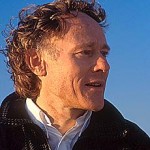


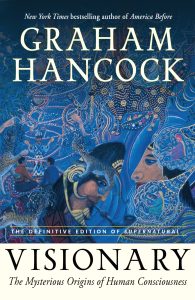
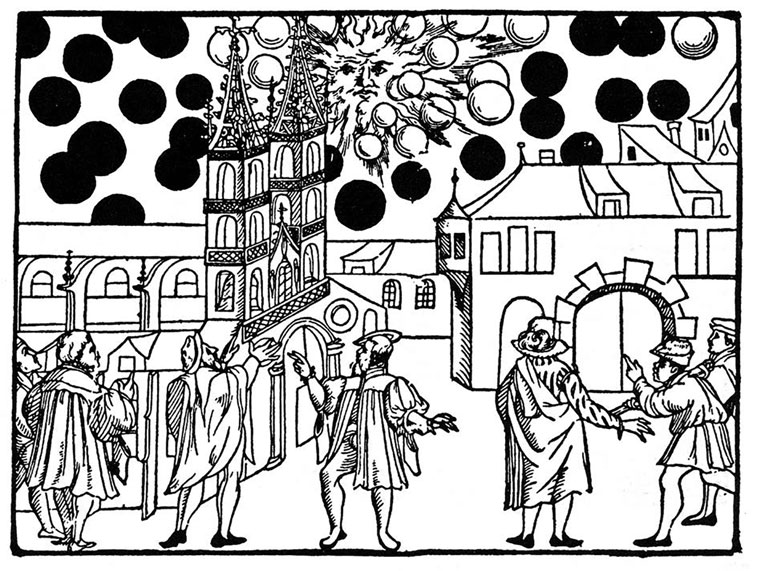
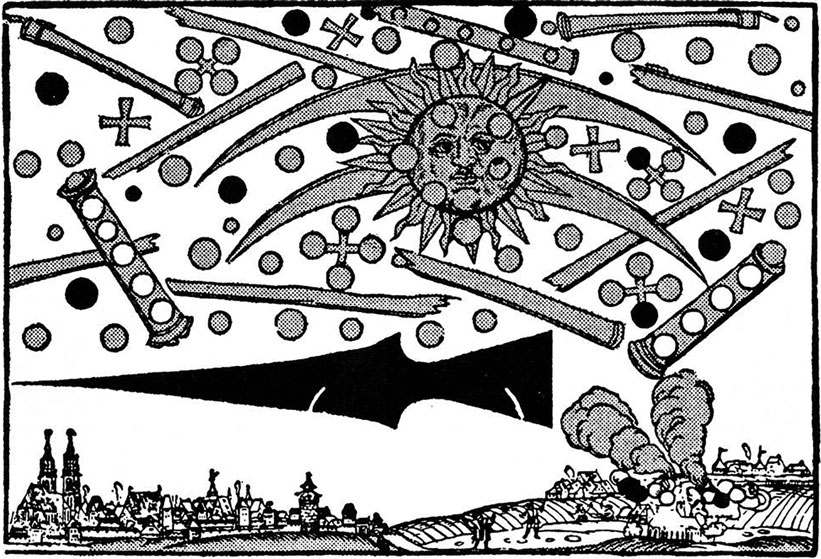
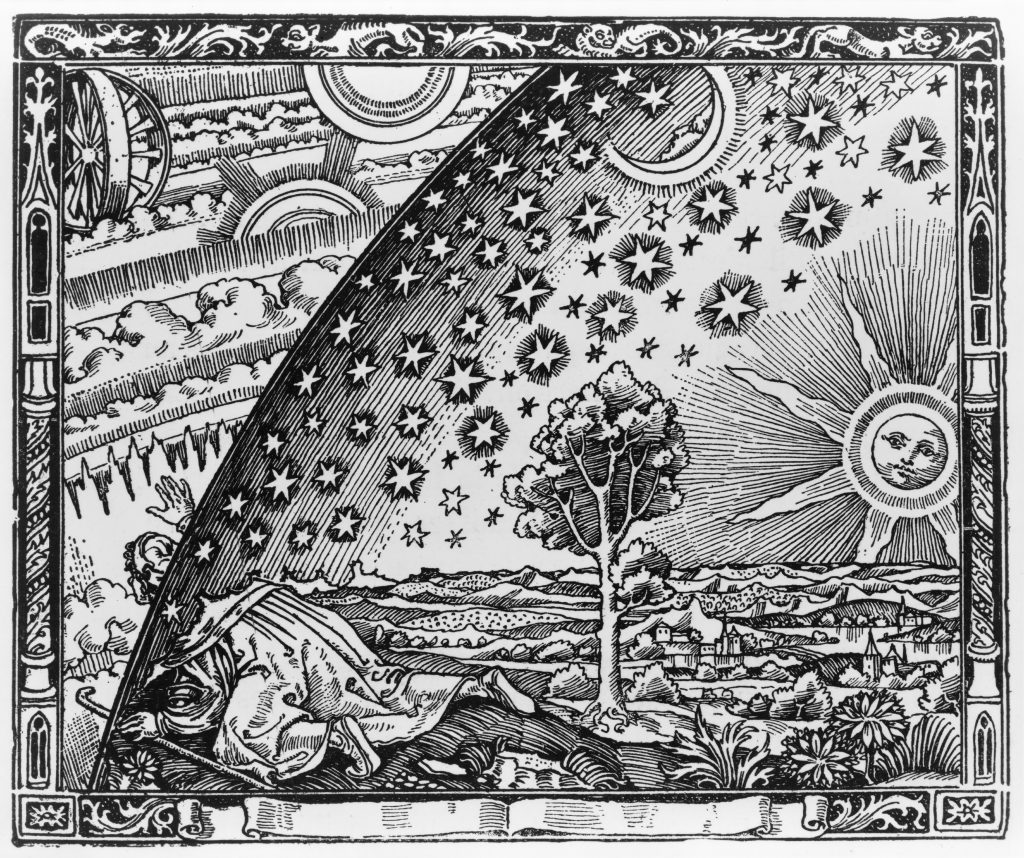

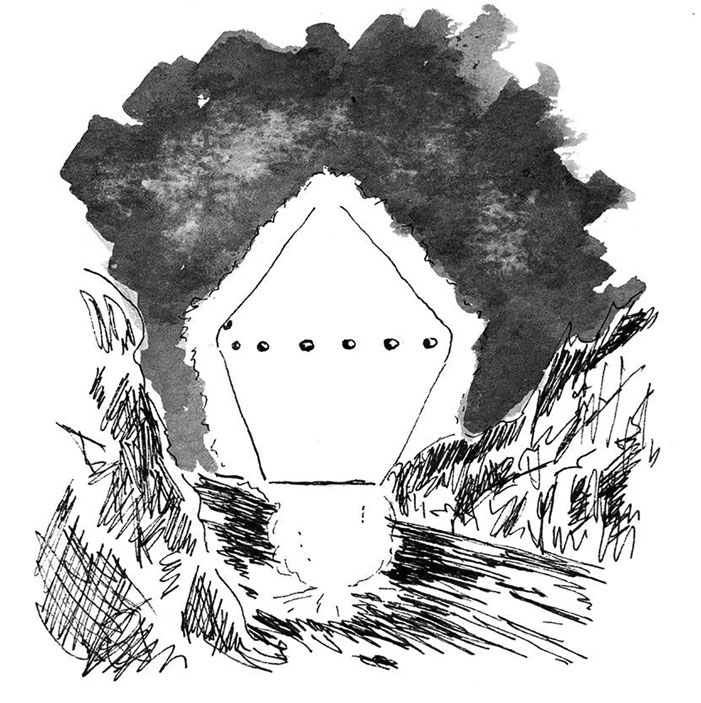
Graham may liike to have a gander at J.G. Bennett’s “Dramatic Universe”-
“The Dramatic Universe builds an account of the significance and purpose of man’s existence on the earth, revealing a great task that necessitates a two-way communication with Higher Intelligences. The four volume work is a complete journey through J.G. Bennett’s search to give expression to the systematisation of the whole Universal drama.”
https://www.jgbennett.org/product/the-dramatic-universe-4-volume-set/
Thanks for the recommendation, Pablo. I hadn’t heard of Bennett but see he was a student of Gurdjieff. Quite a few of Bennett’s books on Amazon. I’ve just bought “Is There Life On Earth” as a sampler because it has an interesting title.If I like it I’ll probably dive deeper. Cheers, Graham
As usual, it is for me an honor to read your writings Mr. Hancock. You put the light where there is darkness. In the presence of your words, clarity takes over. THANK YOU!!!!!!!!!!!!!!!!!!!!!
Why look so far? Indian mathematician Ramanujam said he got the ideas of maths from his family god. Isn’t meditation, rituals, etc all about reaching a higher state to understand the truths of the universe.
Just for the record, and not that it affects this discussion overly, but I’m not sure Jung was on the money referring to the image above labelled “The spiritual pilgrim discovering another world”, as a seventeenth-century image, although it smacks of that era in style. It was, apparently, first published in 1888 (I once got reprimanded for mistaking it for a renaissance image myself) and almost certainly created by Flammarion. https://en.wikipedia.org/wiki/Flammarion_engraving . A great illustration with some sound psychadelic applications, but a modern interpretation, perhaps, rather than an “ancient” image in itself. Doesn’t stop it ringing true on its own, though. Also, I wanted to add, that all these connections – Vallee, UFOS, fairyland, Jung, psychadelics, etc – have been made decades ago by Kenneth Grant, notably in his masterpiece Outer Gateways. Thank you once more Graham for your generous, profound, and amazing work. I will be getting the audiobook of Visionary forthwith, and have been really delighted with all the others I have – such a gift to have the author’s voice delivering the music.
Hi folks,
I am curious to find out what was the outcome of those 5 additional mushrooms which were consumed before closing the rucksack at Avebury in Stonehenge. Would be interesting to find out.
Each Trip is personal and although you can share feelings and colours with other trippers, it is a personal experience.
I do however enjoy reading/ listening to Grahams accounts. If possible can anybody share a link/ detail on this final delve amongst the rustling trees and ancient stones…
Many thanks,
Chris
I am happy to see more interesting work from such an astute author, bravo. One topic of study that may parallel this look into the secret commonwealth is the study of acute toxicity and its effect on the reproductive system. The sex organs and hormones are often the first prey of toxic poisoning, and it could be that sometimes these visions are about our bodies trying to tell us something about an alien (or perhaps toxic) presence that is attacking our own child production center. Mercury is one source, historically often coming from prolonged exposure to wood or coal fires. — Just a thought. I am a bit out of my depth on this, admittedly. Cheers!